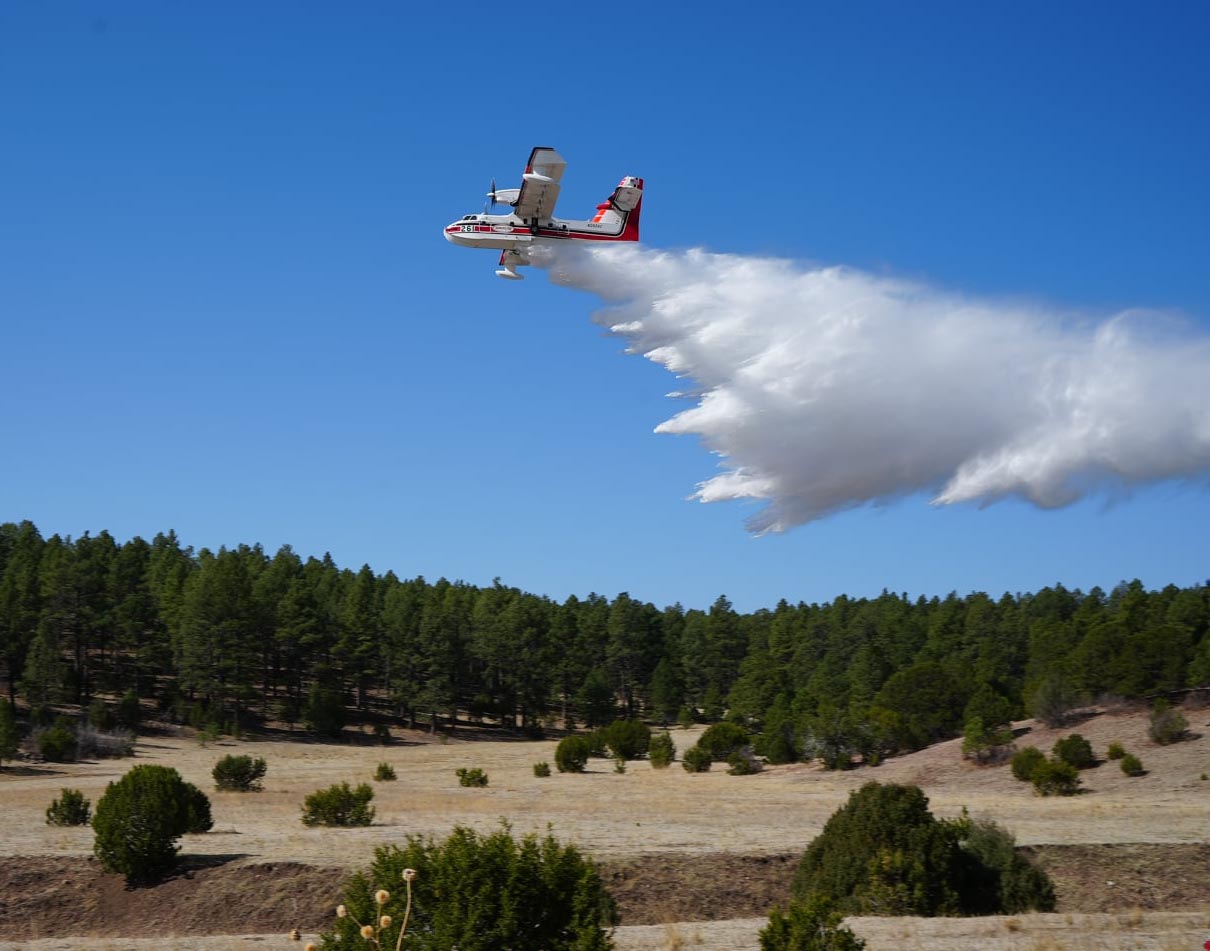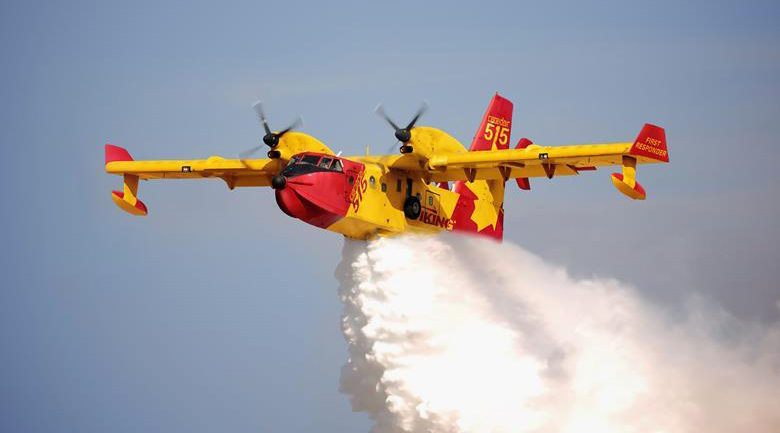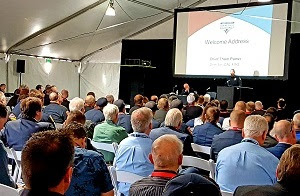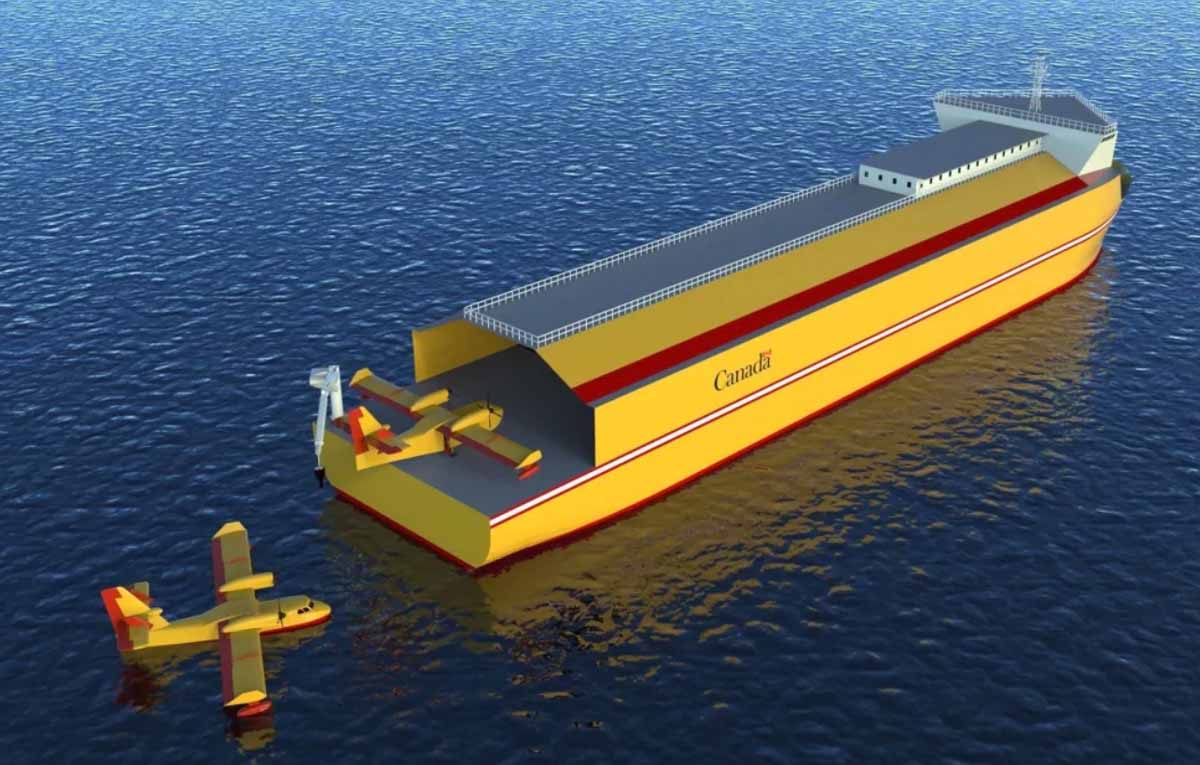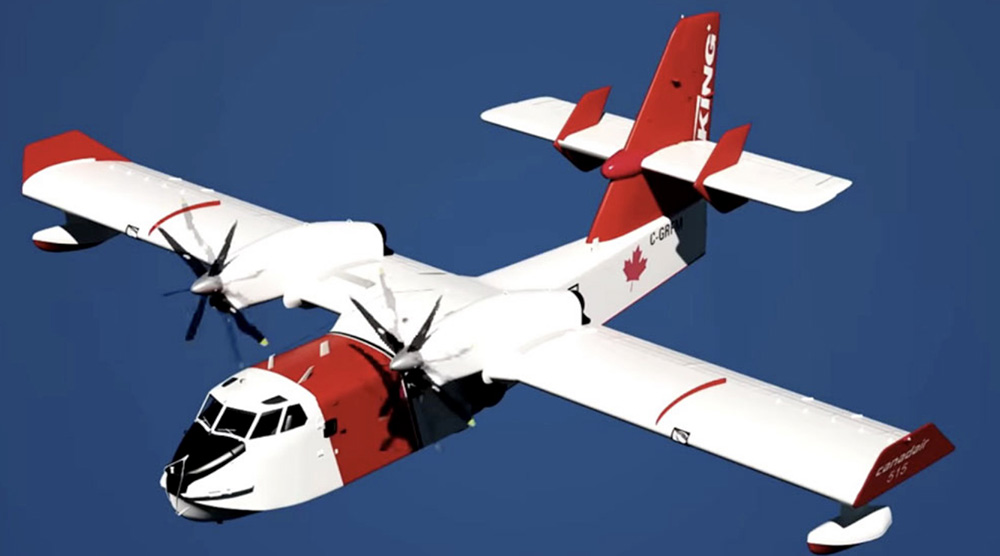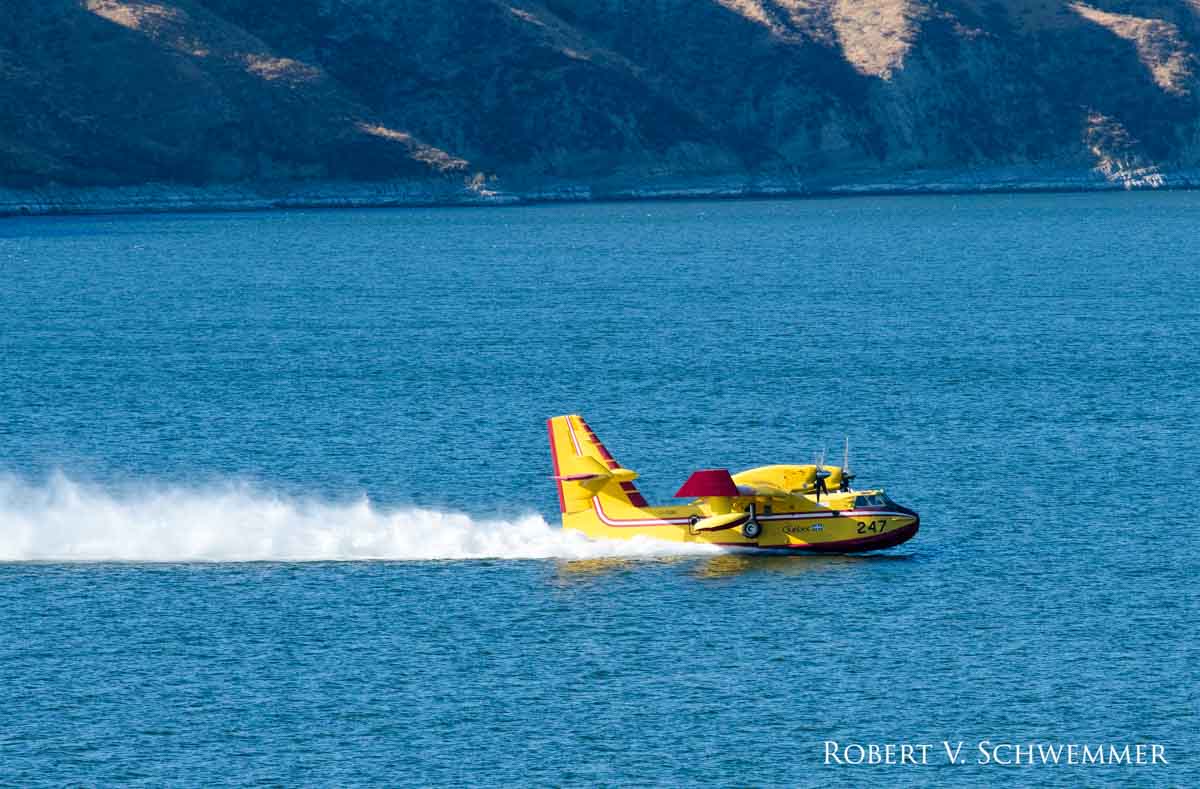
The President of France, Emmanuel Macron, announced that by the end of his term in 2027 the country will have replaced their existing fleet of 12 Canadair scooping air tankers and increased the number to 16.
Mr. Macron referred to this as an “emergency air rearmament” after an extremely busy wildfire season this year. He said there would be an investment of 250 million euros for an “unprecedented order” from Canadair. They also plan to acquire two heavy helicopters.
The Head of State warned that this “exceptional summer” “may not be so so” in the future due to climate change, during a tribute ceremony in the village hall of the ‘Élysée, to those involved in the fight against fire.
“For many of you, this summer was a season in hell”, “hell of flames, fatigue, desolation”, he said.
De Havilland Aircraft has purchased the rights to Canadairs, which have not been built for years, although some older aircraft have been upgraded to CL-415T and CL-415 EAF. The company announced in September they would be building a large manufacturing facility east of Calgary, Alberta. They expect to employ 1,500 workers to produce at least three lines of aircraft — DHC-515 (a modernized and upgraded CL-415), DHC-6 Twin Otter, and Dash 8-400 (Q400).
The DHC-515, first teased in 2018, will be assembled in Calgary with deliveries beginning by the middle of the decade.
On September 21 Gérald Moussa Darmanin, French Minister of the Interior, said, “We want to increase the number of Canadair [water scooping air tankers] in our own fleet from twelve to sixteen. But the problem is not to buy them, it is to produce them. Today there are no longer any factories that do so.”
Mr. Darmanin did not mention at that time they intended to replace the existing 12 water scoopers.
France is also in the process of replacing their S-2 air tankers with six Dash 8-400 (Q400) air tankers.
